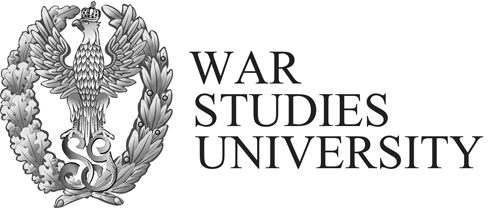Online first
Current issue
All issues
About
Aims and scope
Peer review process
Publication policy and ethics & malpractice statement
Editorial Board
Reviewers
Publisher
Guide for authors
Call for papers
Book Reviews
Special Issues Archive
New and emerging technologies in defence education, training and governance
Paratroopers in future operations
1
National University of Public Service, Hungary
Publication date: 2014-06-30
Security and Defence Quarterly 2014;3(2):46-60
KEYWORDS
ABSTRACT
Between the two World Wars paratroopers or airborne units were set up in preparation
for the coming conflicts as the means of the vertical envelopement. During World War II
several airborne operations were conducted. The strength of paratroopers deployed ranged
from the individual troopers to tens of thousands. During the Cold War era militaries in
different conflicts also used parachutes as a delivery system, airborne and special forces
units for combat behind enemy lines many times. The development of helicopter technology
modernized airborne operations and gave a possibility to combine it with air assult
capabilities.
Today’s operations require rapid deployment of forces to stop the escalation of any
conflict and handle the situation, finally to restore peace, normalize the situation and life
conditions.
To fulfil such requirements paratrooper units are one of the most appropriate ones. Thank
to their high readiness, medical and mental conditions, moral and fighting spirit, airborne
or air-transportable weaponry and equipment they can operate successfully in an extreme,
unknown environment till the arrival of the main stabilisation forces.
REFERENCES (2)
1.
Dr. BODA, József: Future Capabilities of Parachutist, Airborne and Special Forces in the EU/NATO contextDr. BOLDIZSÁR, Gábor: Kultúrantropológia és a jövő tisztképzés In: Hadtudományi Szemle, Volume 2013/1, Budapest, (http://uni-nke.hu/downloads/ku....
2.
pdf, downloaded: 30 May 2013)Dr. BOLDIZSÁR Gábor: A magyar PRT, mint a legkomplexebb külföldi válságkezelés műveleti környezete In Társadalom és Honvédelem, 2013/1-2. (NKE, Budapest, 2013) Dr J.R.T. Wood: Fire Force, Helicopter Warfare in Rhodesia: 1962-1980
We process personal data collected when visiting the website. The function of obtaining information about users and their behavior is carried out by voluntarily entered information in forms and saving cookies in end devices. Data, including cookies, are used to provide services, improve the user experience and to analyze the traffic in accordance with the Privacy policy. Data are also collected and processed by Google Analytics tool (more).
You can change cookies settings in your browser. Restricted use of cookies in the browser configuration may affect some functionalities of the website.
You can change cookies settings in your browser. Restricted use of cookies in the browser configuration may affect some functionalities of the website.




